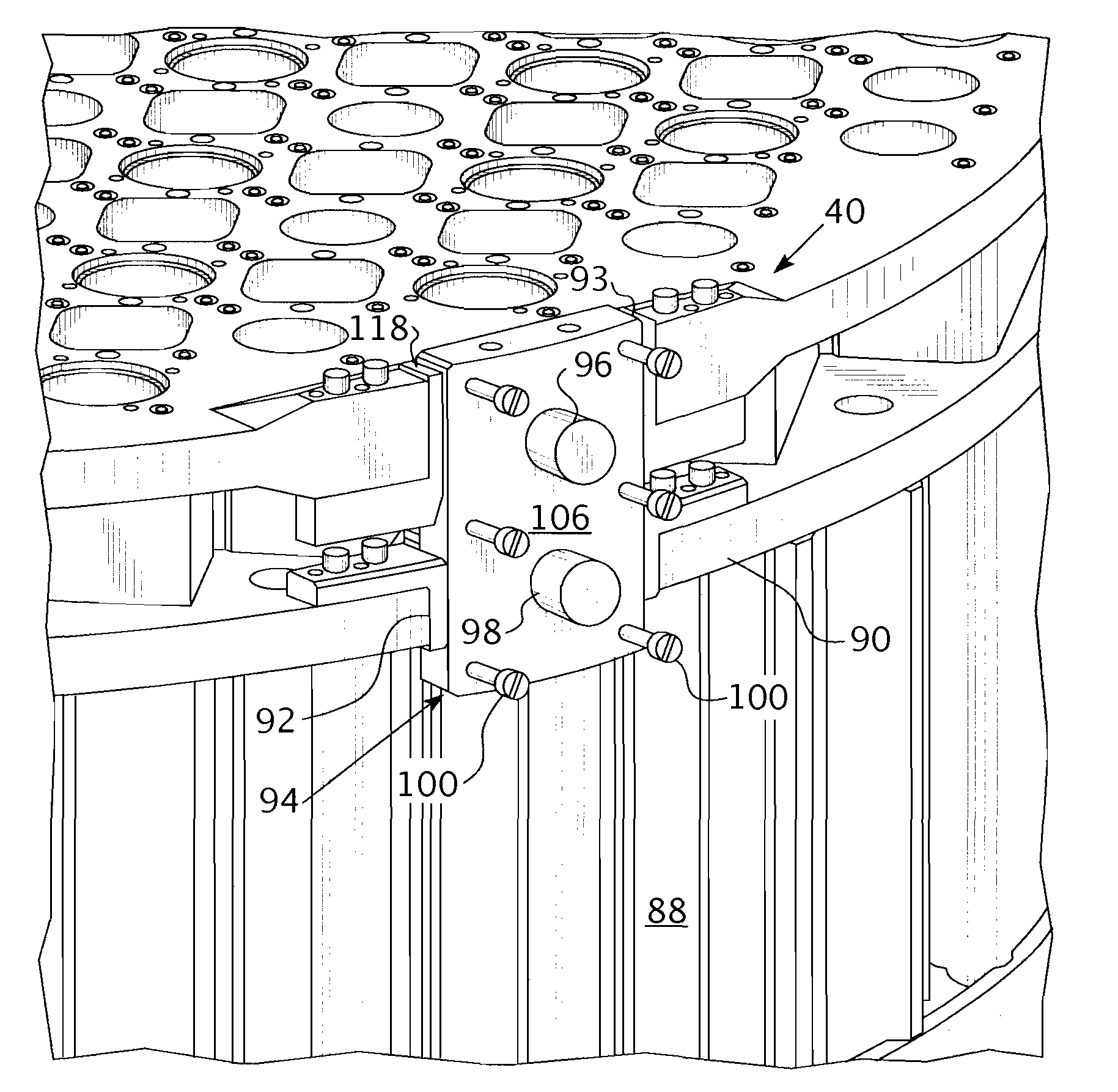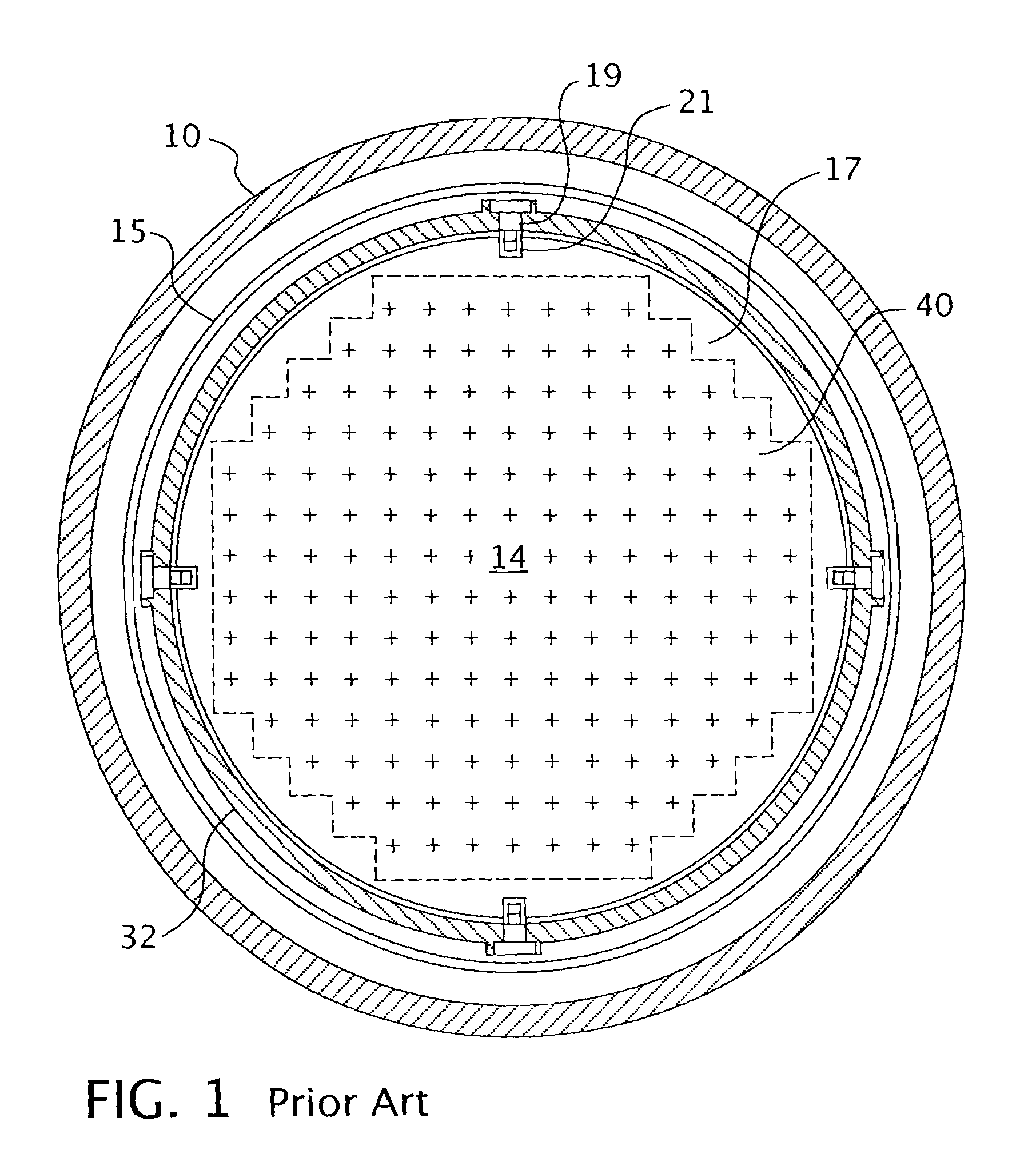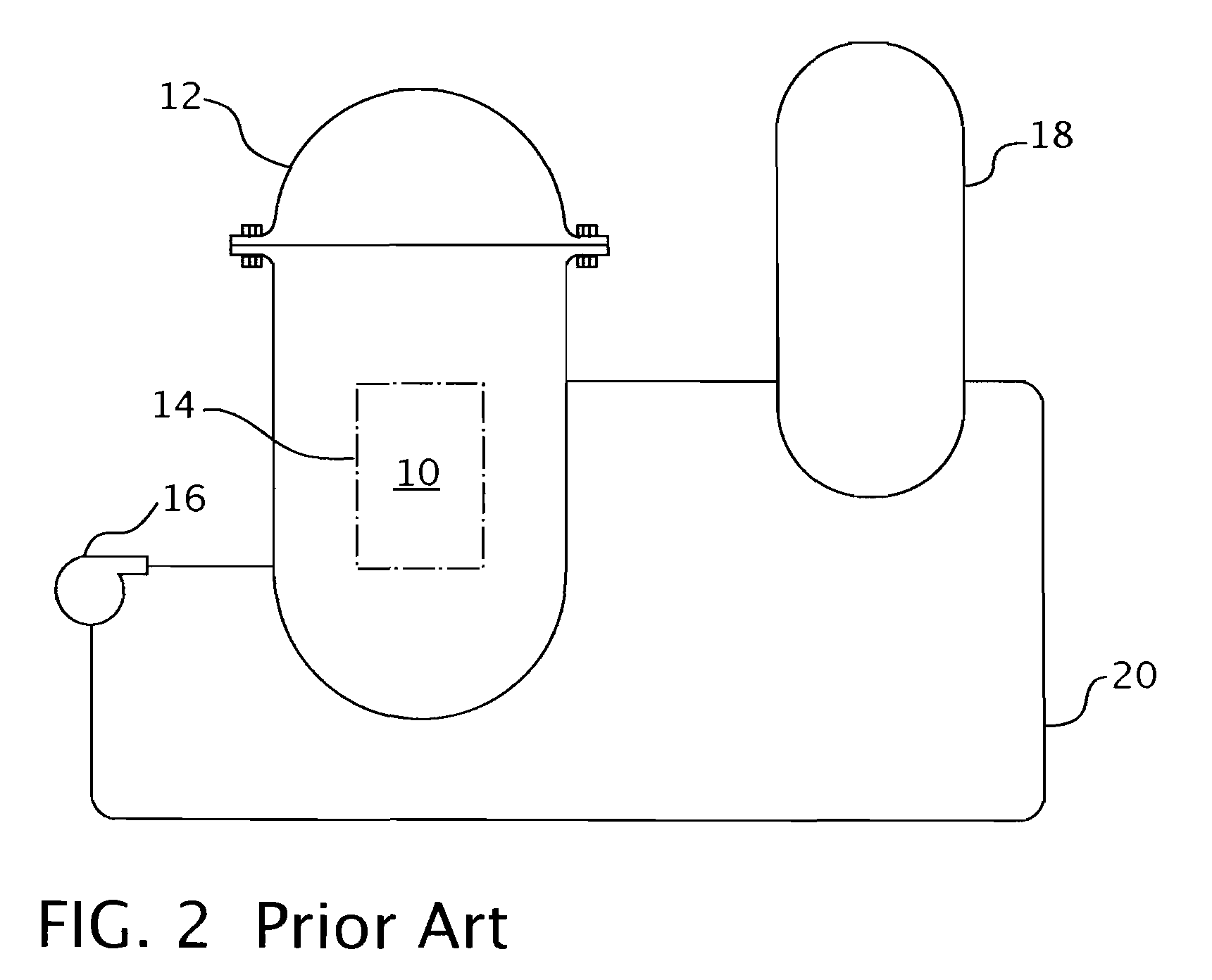Nuclear reactor alignment plate configuration
a technology of alignment plate and nuclear reactor, applied in the direction of climate sustainability, greenhouse gas reduction, containment, etc., to achieve the effect of small clearan
- Summary
- Abstract
- Description
- Claims
- Application Information
AI Technical Summary
Benefits of technology
Problems solved by technology
Method used
Image
Examples
Embodiment Construction
[0019]Referring now to the drawings, FIG. 2 shows a simplified nuclear reactor primary system, including a generally cylindrical reactor pressure vessel (10) having a closure head (12) enclosing a nuclear core (14). A liquid reactor coolant, such as water, is pumped into the vessel (10) by pumps (16) through the core (14) where heat energy is absorbed and is discharged to a heat exchanger, typically referred to as a steam generator, in which heat is transferred to a utilization circuit (not shown), such as a steam-driven turbine generator. The reactor coolant is then returned to the pump (16), completing the primary loop. Typically, a plurality of the above-described loops are connected to a single reactor vessel (10) by reactor coolant piping (20).
[0020]An exemplary reactor design is shown in more detail in FIG. 3. In addition to a core (14) comprised of a plurality of parallel, vertical co-extending fuel assemblies (22), for purposes of this description, the other vessel internal ...
PUM
 Login to View More
Login to View More Abstract
Description
Claims
Application Information
 Login to View More
Login to View More - R&D
- Intellectual Property
- Life Sciences
- Materials
- Tech Scout
- Unparalleled Data Quality
- Higher Quality Content
- 60% Fewer Hallucinations
Browse by: Latest US Patents, China's latest patents, Technical Efficacy Thesaurus, Application Domain, Technology Topic, Popular Technical Reports.
© 2025 PatSnap. All rights reserved.Legal|Privacy policy|Modern Slavery Act Transparency Statement|Sitemap|About US| Contact US: help@patsnap.com



